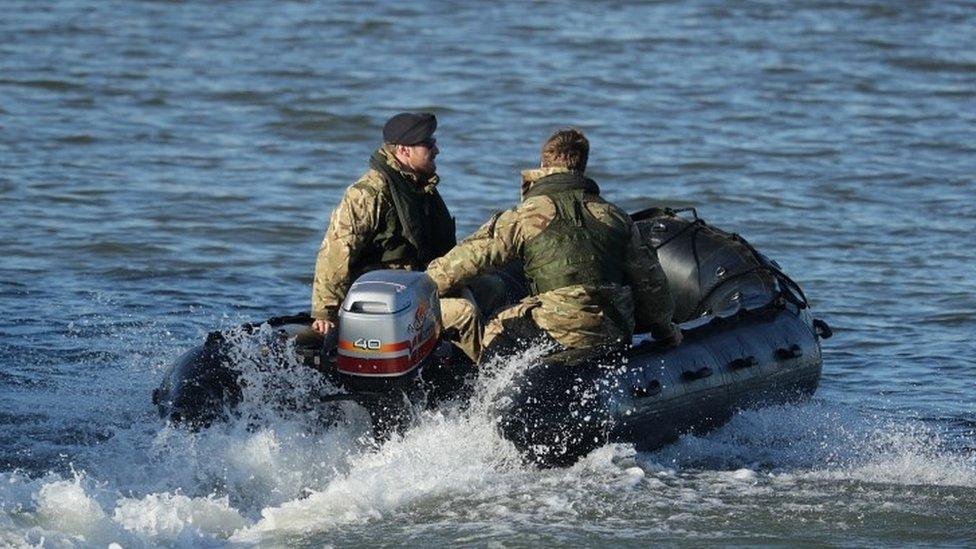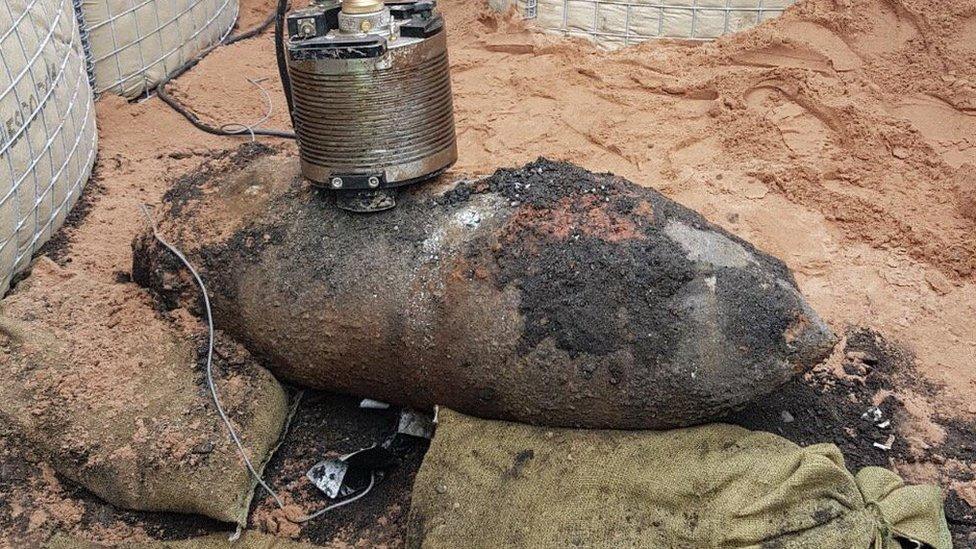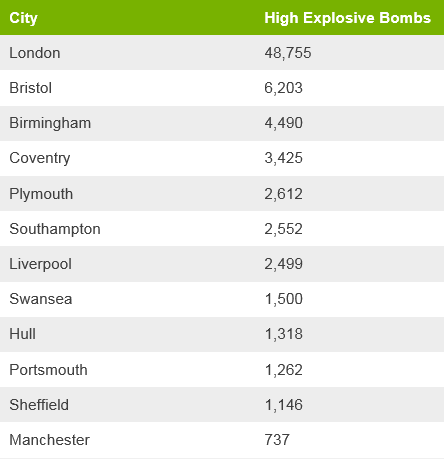Unexploded bombs: How common are they?
- Published
Controlled explosion of bomb found near London City Airport
An unexploded World War Two bomb found near London City Airport has been detonated.
But just how common are these type of discoveries?
Since 2010, the Ministry of Defence (MoD) says it has been involved with making safe 450 German WW2 bombs - about 60 per year.
Unfortunately we do not have data pre-2010, so we cannot say if the rate of discovery has risen or fallen in the years since 1945.
Also, these figures do not take into account the involvement of private companies.
Aside from the military (supported by the police, fire and ambulance services), unexploded devices are also disposed of by private individuals - usually with a military background - as well as a few specialist companies.
This makes it difficult to establish exactly how many items are dealt with each year as the data is not officially collated from different sources.

The Ministry of Defence said bomb disposal teams deal with about 60 German World War Two bombs a year
Zetica, external, a company that specialises in the recovery and disposal of unexploded bombs, estimates that the leading private sector firms deal with around 8,000 items collectively each year.
That includes bombs, grenades and mortars.
Mike Sainsbury, Zetica's managing director, says it is impossible to date some items.
"There's not much difference nowadays between a two inch 1940s mortar and an 1980s one - apart from a bit of more rust," he says.
This makes it very difficult to establish what proportion of overall ordnance comes from WW2.
Other discovered items could be more recent and originate from training exercises, for example.
- How much of a threat are unexploded bombs?
Only a small fraction of these discoveries end up in the news.
The ones that do appear in the headlines tend to be particularly large devices, which sometimes lead to evacuations of the surrounding area.

Last a year a 250kg WW2 bomb, containing 139kg of high explosives, was found in Birmingham
Most of the high explosive WW2 ordnance is buried very deep and it is often discovered by construction workers.
It is therefore unlikely that members of the public will stumble across one.
The German WW2 bombing campaign tended to focus on strategic locations.
This meant that major UK cities or areas with important features, such as railway junctions or ports, were key targets.
The table below sets out the official records of World War Two bombing in the UK's major towns and cities.

Source: Zetica (based on Ministry of Home Security: Research and Experiments Department, Registered Papers)
The MoD told BBC Reality Check that around 10% of the bombs dropped over the UK during World War Two did not explode.
The typical German World War Two bomb was either 50kg or 250kg.
Larger bombs (500kg or 1,000kg) become more frequent towards the end of the war.
London City Airport is the site of the fourth 500kg bomb the MoD has dealt with in the last 15 months.
The others were: Bath (May 2016), Portsmouth (September 2016) and London (March 2017).

